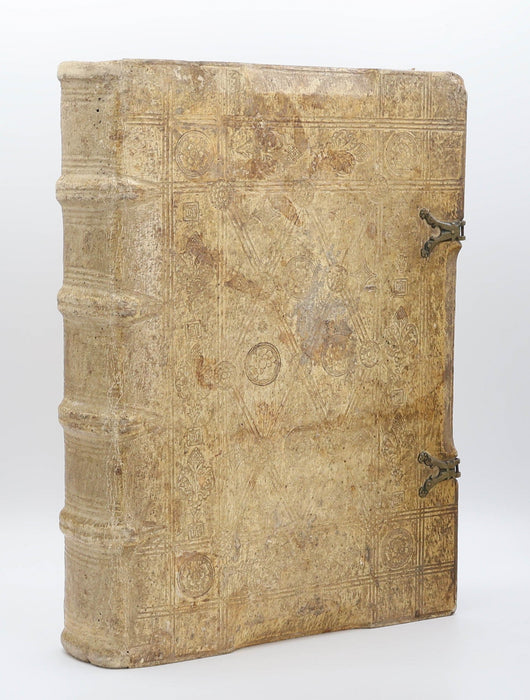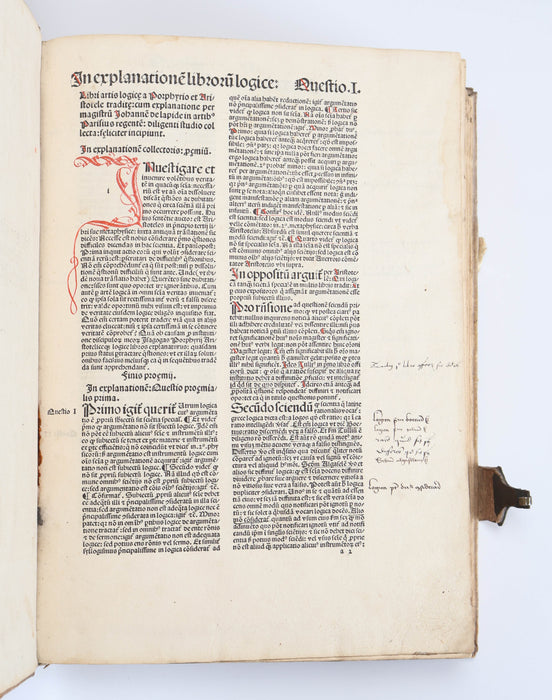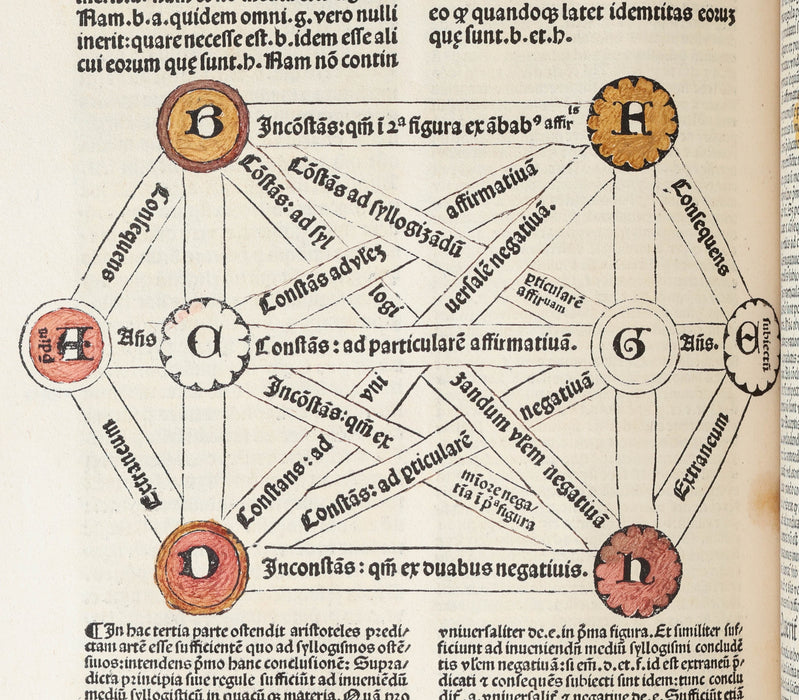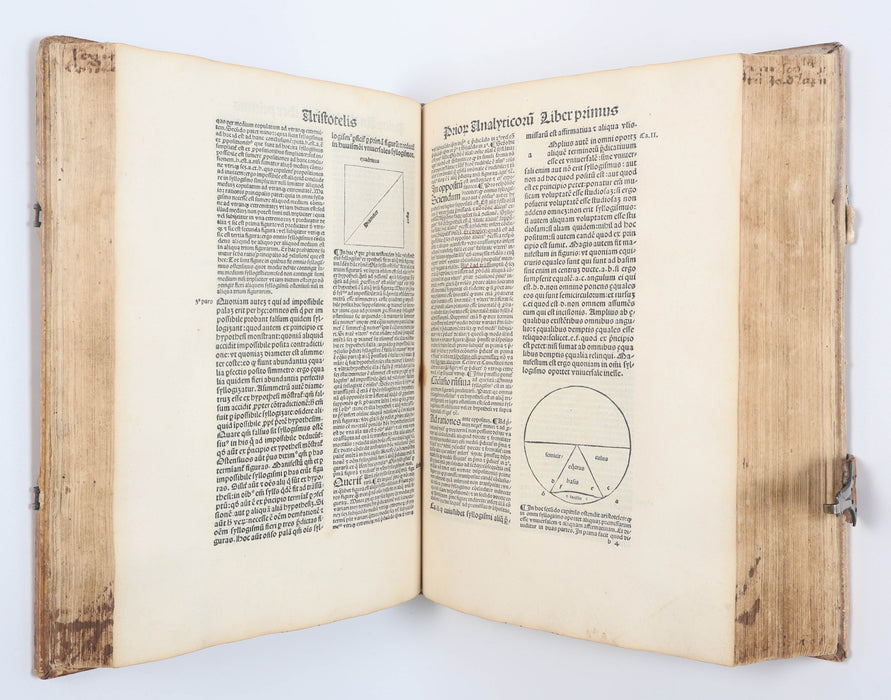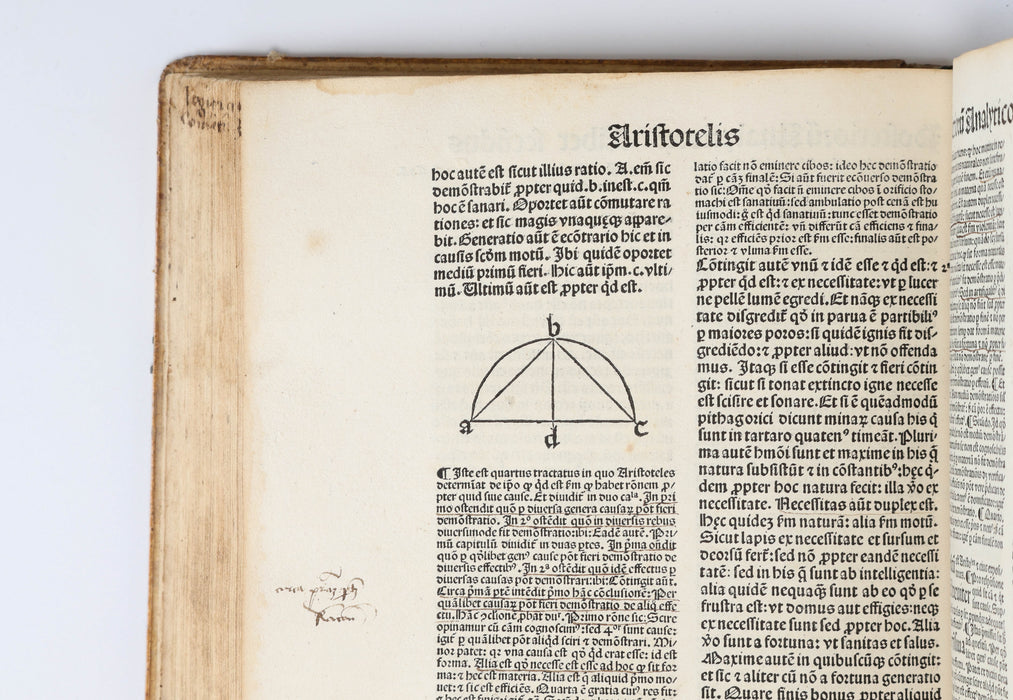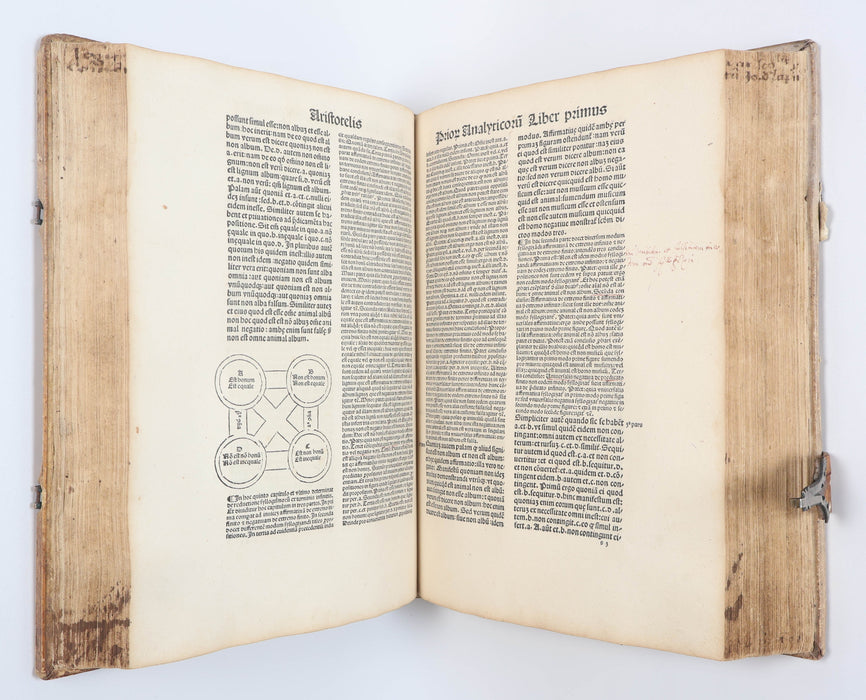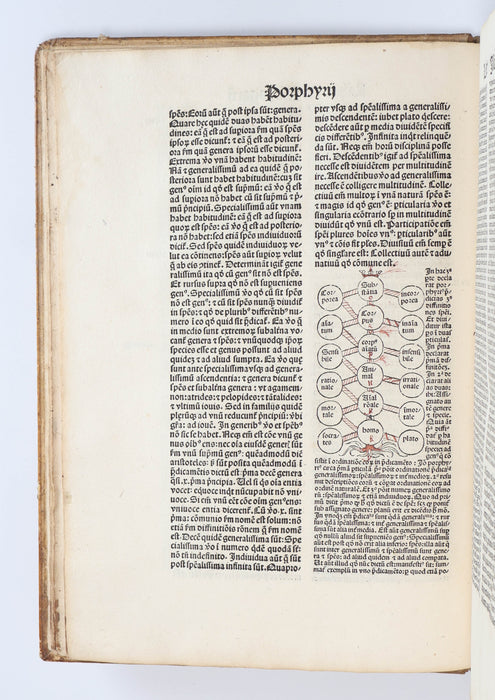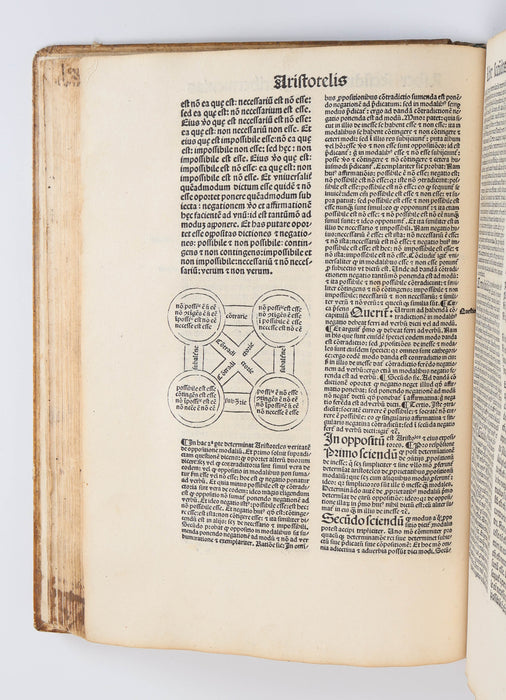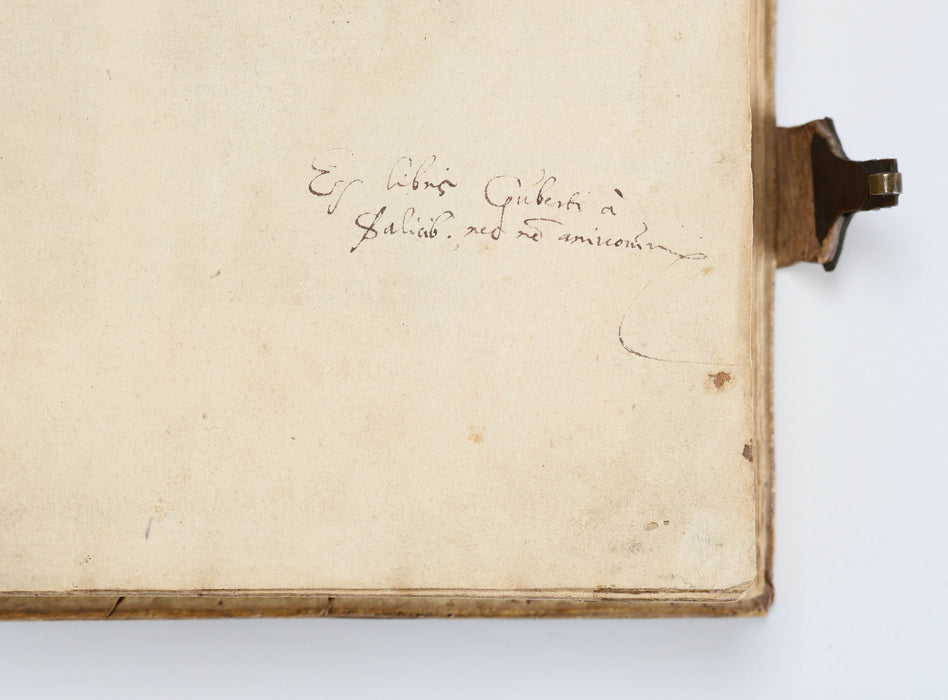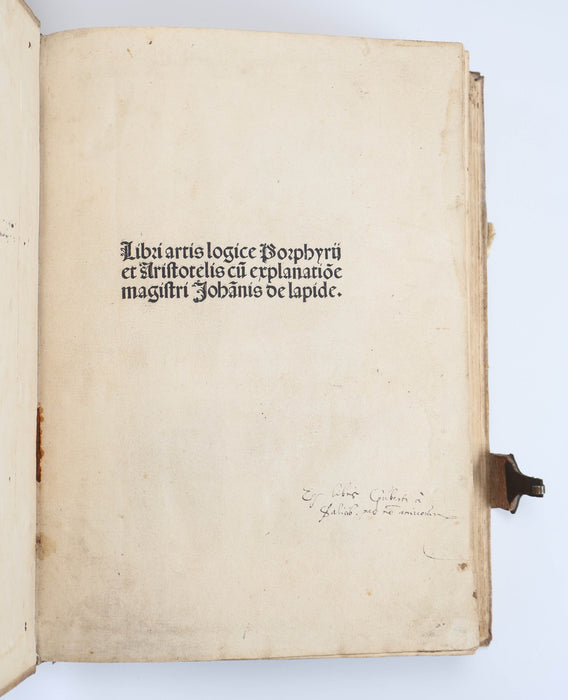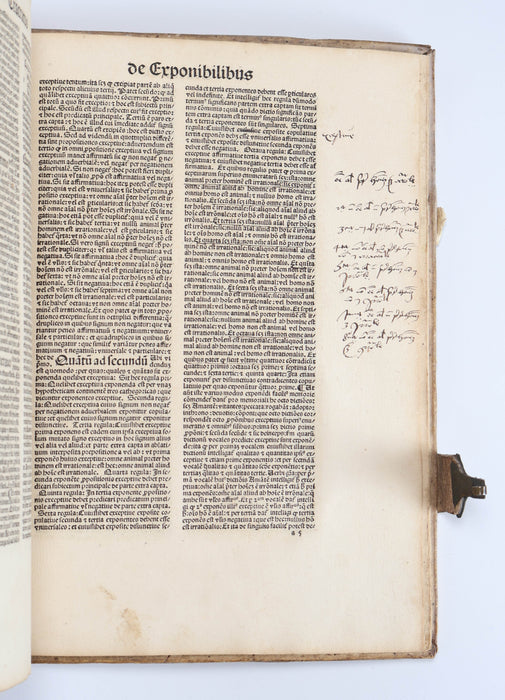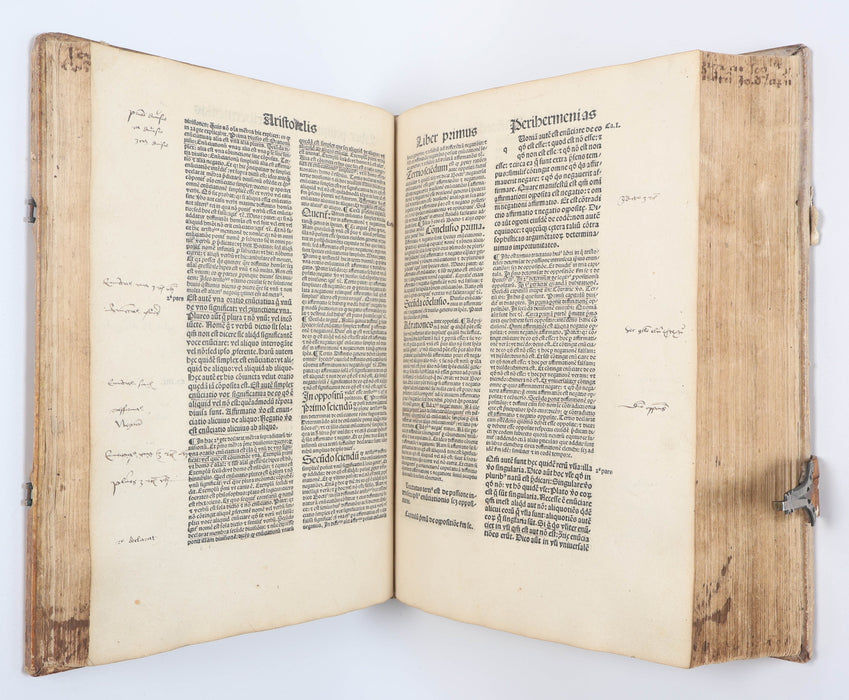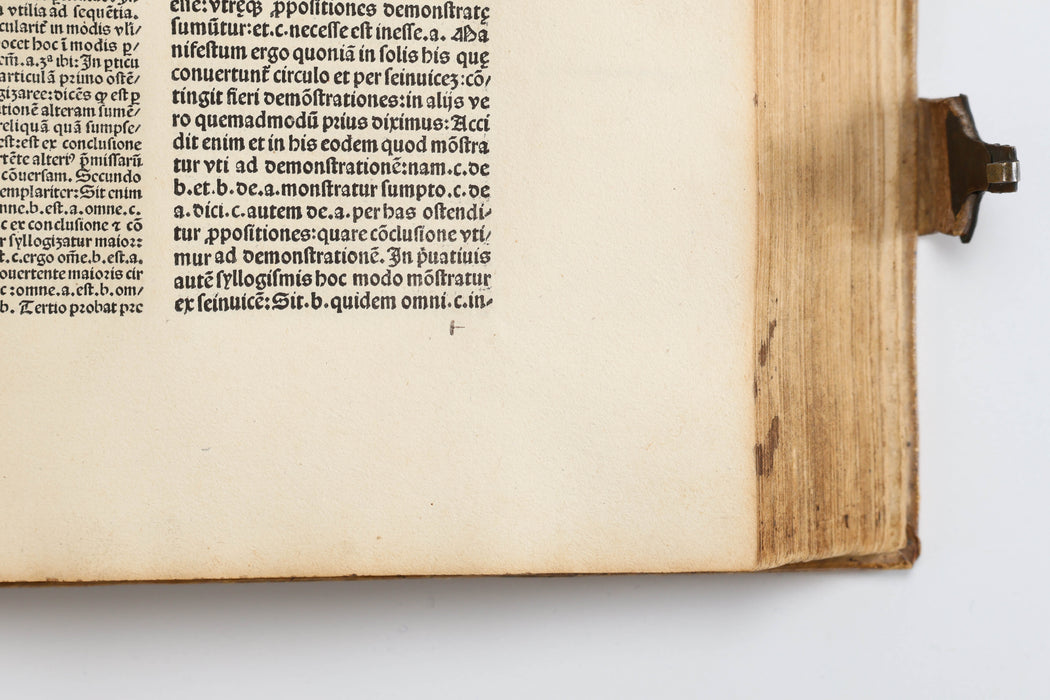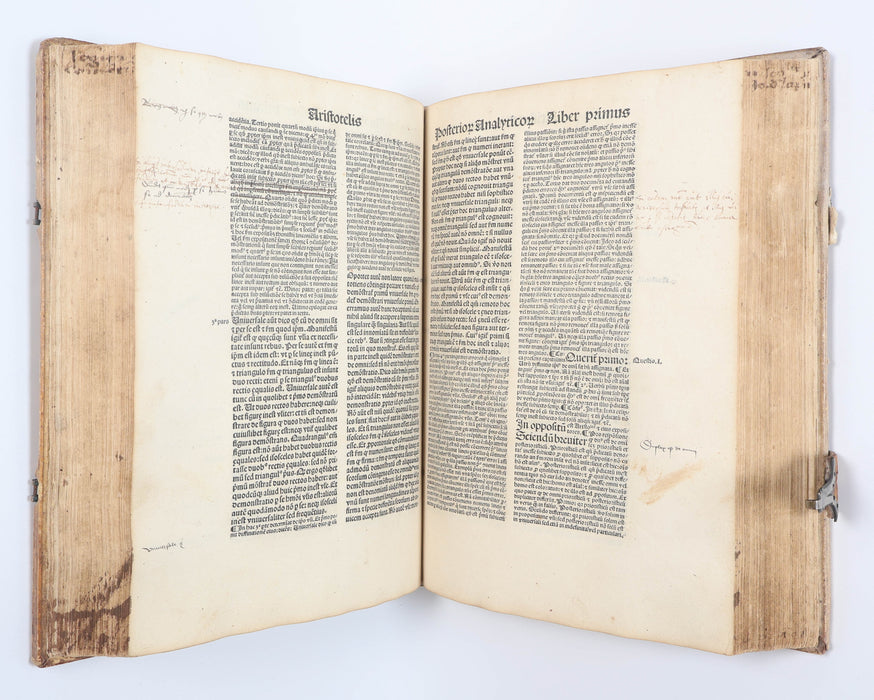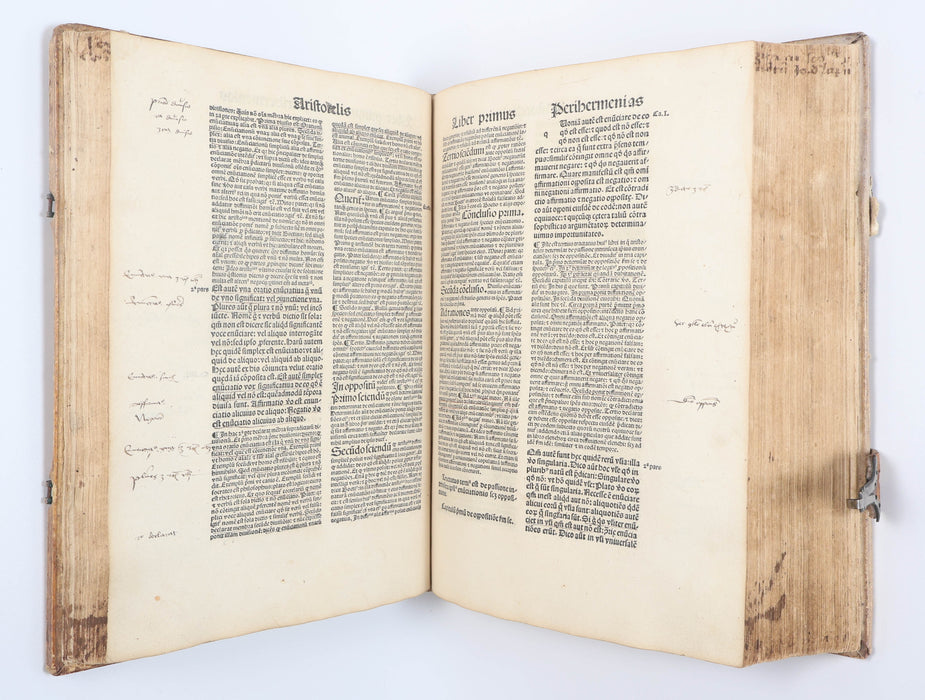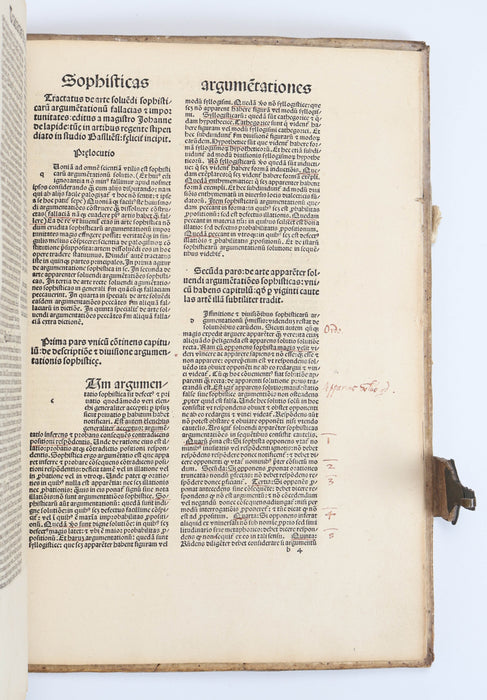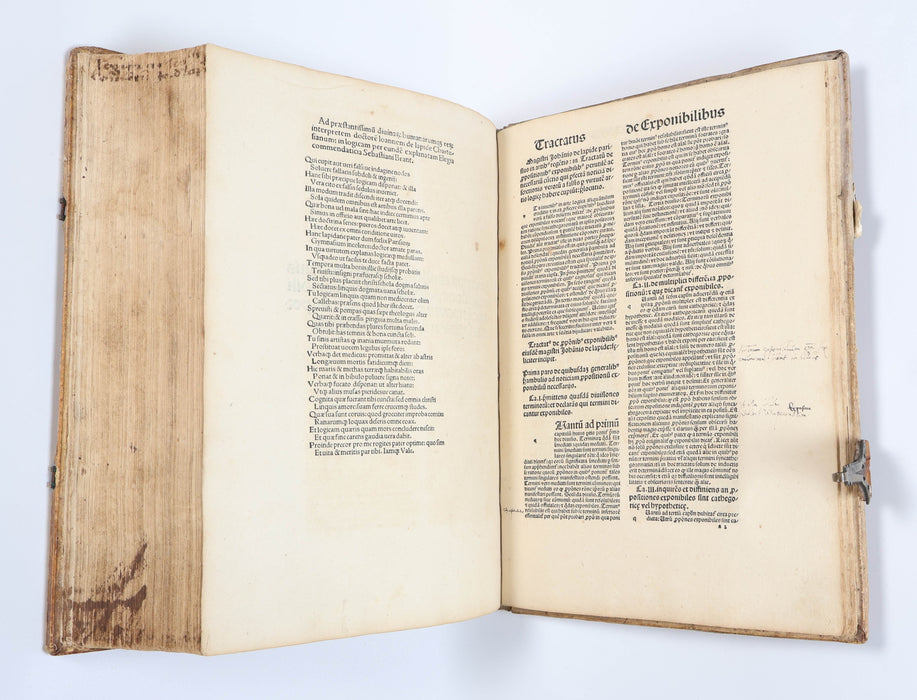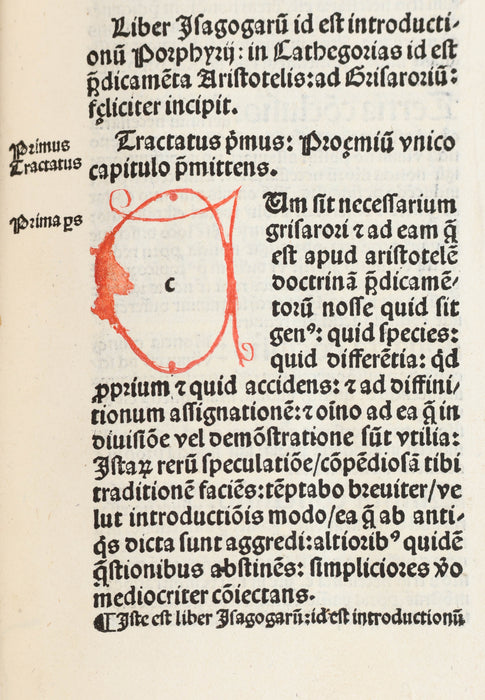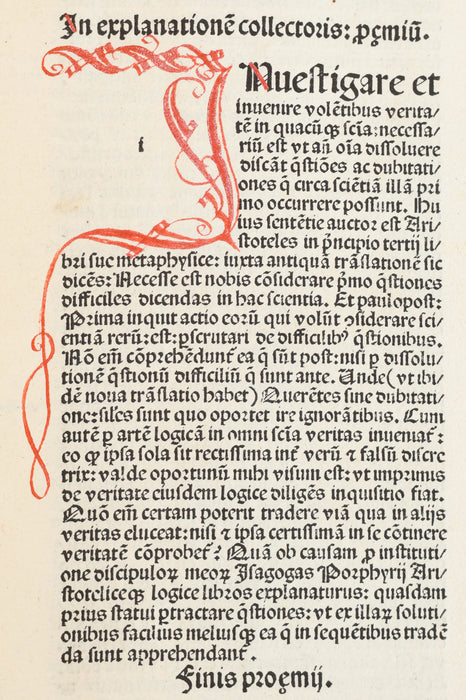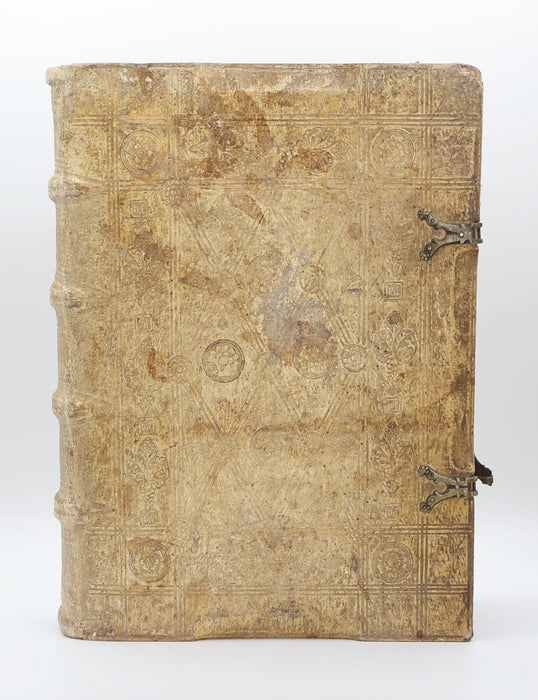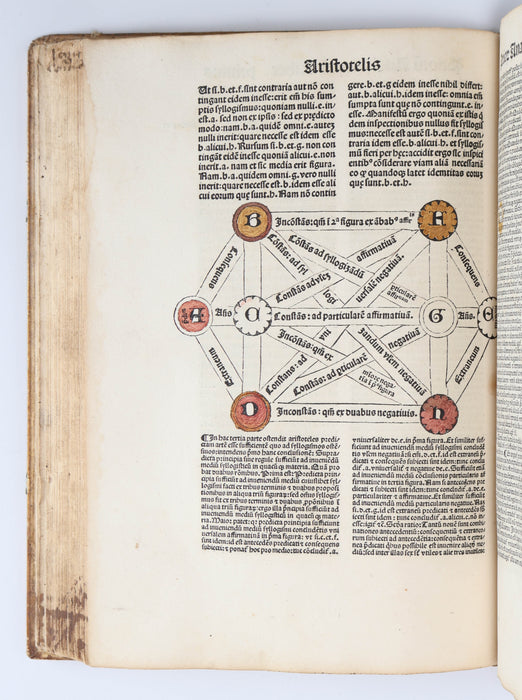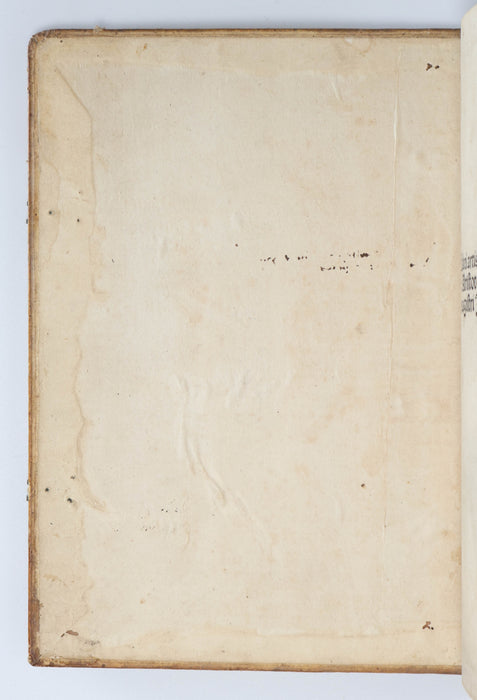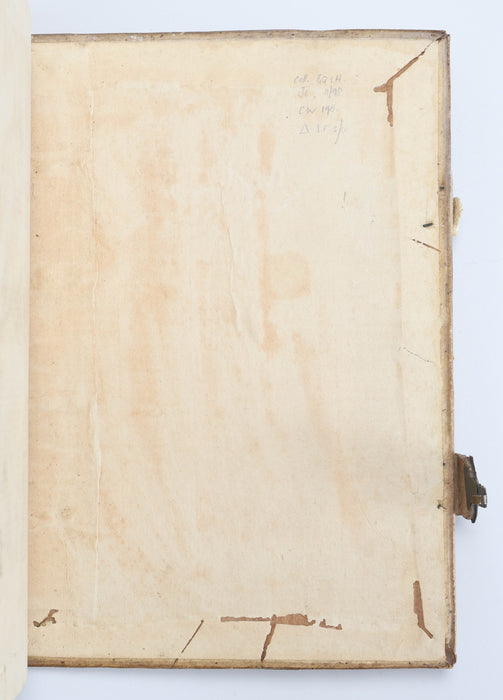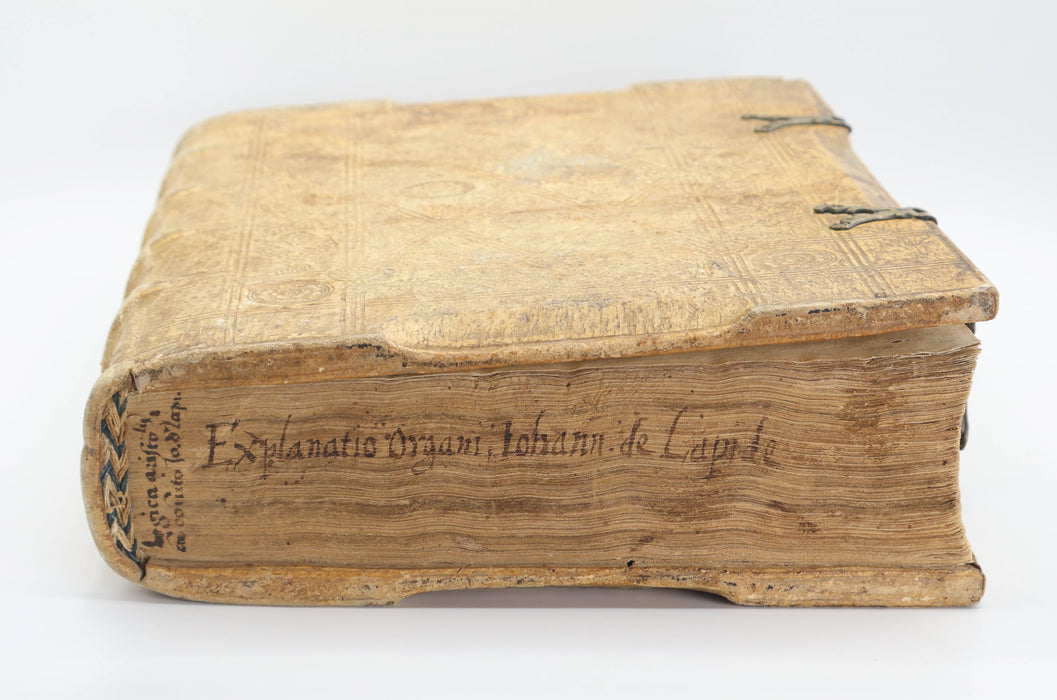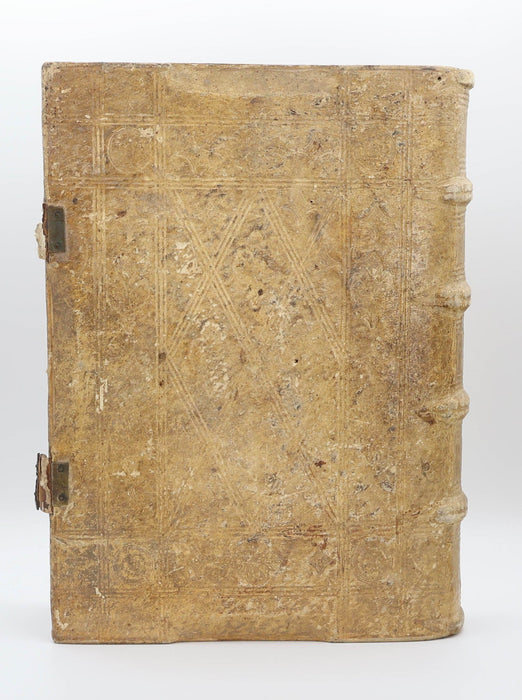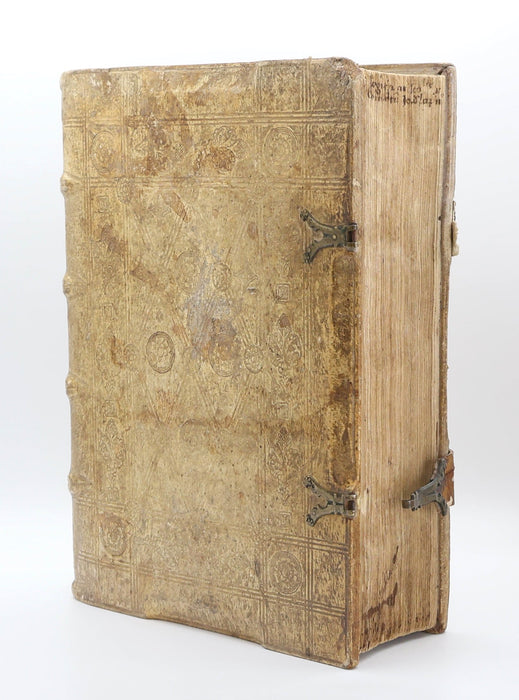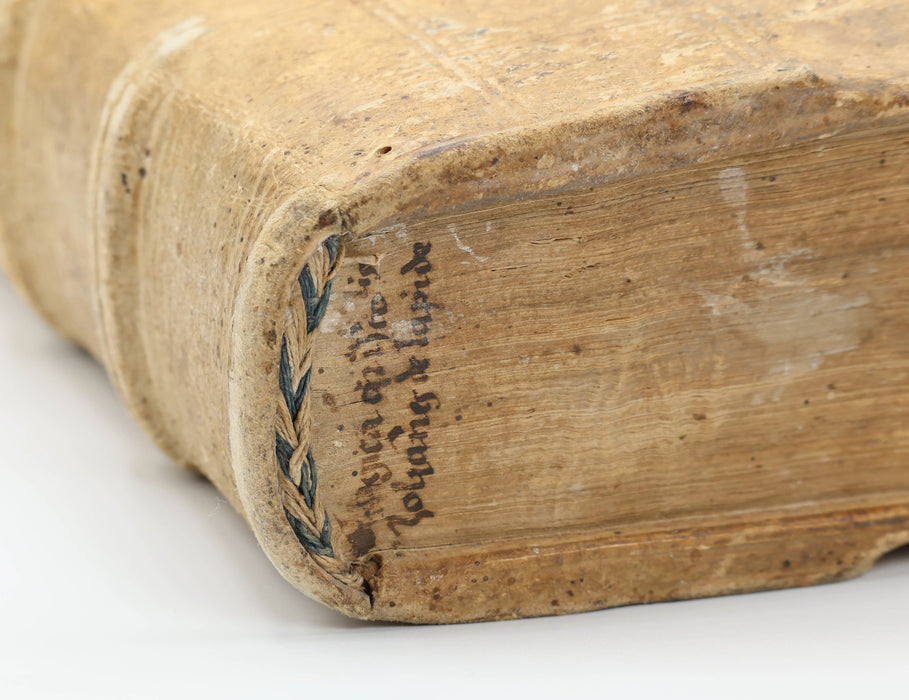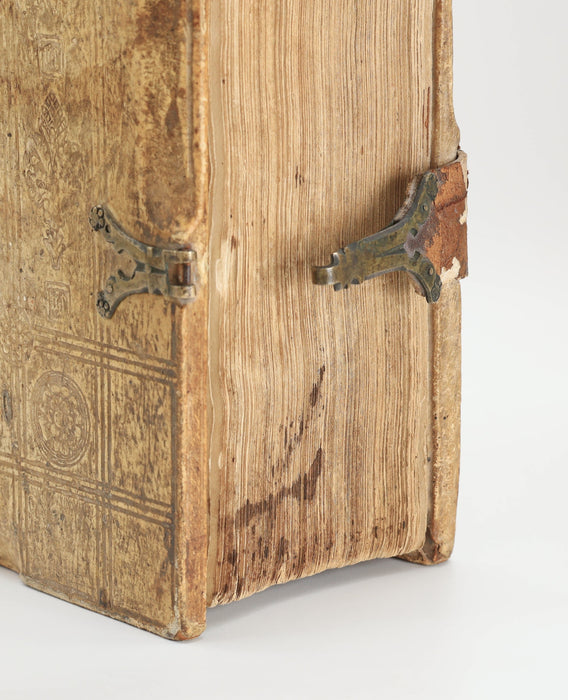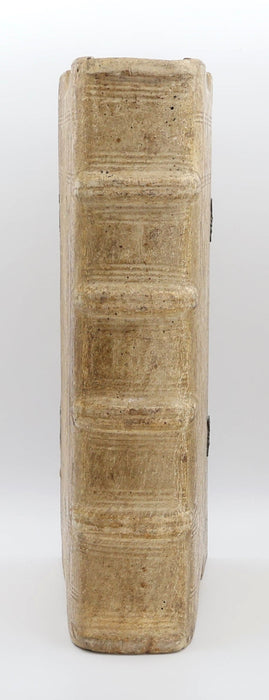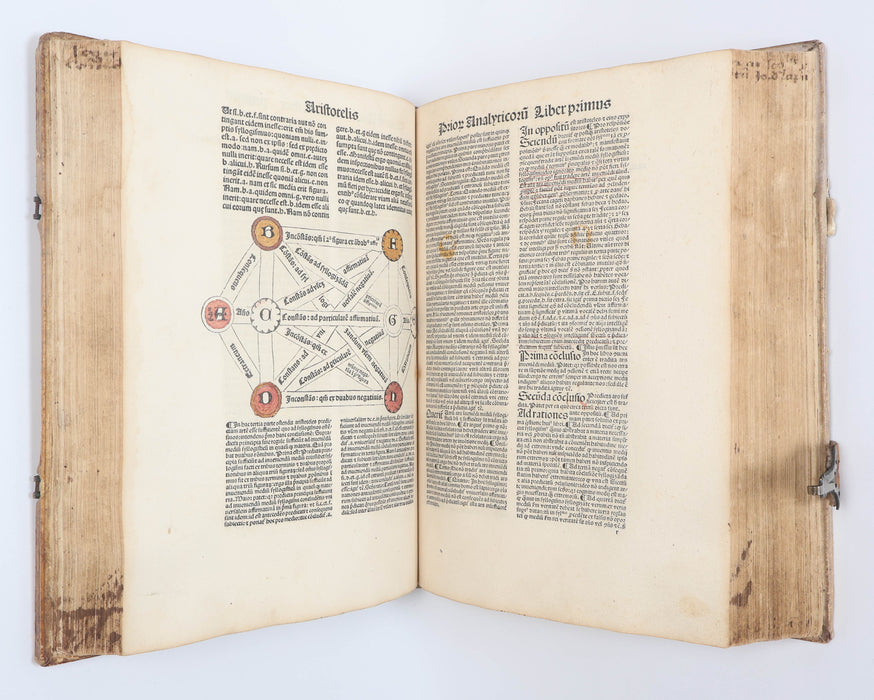
PRINTED BY THE COMMENTATOR’S STUDENT
Aristoteles: Libri artis logice Porphyrii et Aristotelis cu[m] explanatio[n]e magistri Johan[n]is de Lapide [Basel, Johann Amerbach, [not after 1495]).
An attractive and interesting copy - with a contemporary binding from an identified workshop in Basel and a later (16th-century) Swiss ownership inscription - of a rare landmark in the history of editions of Aristotle, the first printing of the Aristotelian logical corpus (Organon) with contemporary commentary, by the humanist, philosophy professor, and printing entrepreneur Johann Heynlin von Steyn (Johannes de Lapide, 1425-1496).
With Aristotle, the publication has the famous medieval textbooks the Isagoge of Porphyry (d.305), and the Liber sex principiorum attributed to Gilbert de la Porrée (c.1085-1154). Porphyry and Aristotle are in Latin translations from Greek by Boethius (d.524) and James of Venice (d.1147). Lapide adds two of his own works at end. Thirteen pages have woodcut diagrams. A sometime rector of the Sorbonne, Lapide is characterised as a philosopher as an adherent to the realist via antiqua school of St. Thomas Aquinas (as against the nominalist via moderna school of William of Ockham).
Part of the oeuvre of the printer Johann Amerbach (1440/45-1513), who placed Basel on the European map as a centre of original scholarly publishing (later to be succeeded by Johann Froben, who acquired his business). One of Amerbach’s great collaborators was Heynlin, who had taught him in Paris and was at this time resident in the Charterhouse of Basel. Heynlin had in 1470 helped establish the first academic humanist printing press in France (which was also coincidentally the first printing press in Paris), and had the highest regard for Amerbach’s attention to detail, stating this in a letter of 1492. At sig. V8 recto, a colophon stands out in our book for its setting in humanist roman type and as a statement of the printer’s relationship and values: “thus happily finishes the Porphyrian and Aristotelian logic with the explanation of master Johannes de Lapide, in the most accurate impression, in Basel, by master Johann Amerbach, sometime Lapide’s pupil”.
Our copy has been neatly annotated by different early readers and provided by them with pink underlinings and some additions of colour to diagrams. It has been sparsely rubricated by a professional - there is a fine nine-line strapwork initial in red ink at the beginning (sig. a2 recto), and the same worker may have struck through, in red, small printed capitals and paragraph marks on the same page. Possibly (although not certainly) by the same worker (rather than readers) is a seven-line red initial at sig. a5 recto and a 3-line initial at sig. b4 recto. The rubricator otherwise leaves initials blank. A window into book preparation practices in Basel.
The copy also has a hitherto unrecorded printing variation: at sig. t1 recto the gathering signature ’t’ is provided in manuscript where it is printed in the two other copies we have inspected, Bayerische Staatsbibliothek shelfmark Res/2 A.gr.b. 95 and British Library shelfmark IB.37523. This indicates, at the least, that that gathering of our book was printed at an early time in the edition’s printing history.
Description
One volume, 29.2 cms. x 21.4 cms. in binding, folio, 290 leaves, double column, signed a8 b6 ”cde”8 f6 g8 h10 i6 k6 l8 m10 n6 o8 p6 q8 r6 s8 t6 v10 A8 B6 C8 D6 E-F6 G8 H6 I8 K6 L8 M6 N8 O6 P8 Q6 R8 S6 T6 V8 a8 b10. Double column, printed in black letter, printer’s statement in roman letter at sig. U8 recto. Woodcut printed diagrams to 13 pages. Light or medium browning, slight spotting and staining, worming to outer margins (blank) at very end.
Binding
Bound in contemporary blind-stamped and blind-ruled pigskin over wooden boards, partly bevelled at sides, covers with outer frame and central trellis design, spine with four raised double bands. Binding decorated with tools identifiable as from the ‘Punktquadrat’ bindery of Basel (active 1481-1500) (EBDB workshop w000026; Christ monogram s001512, shrub stamp s001513, rosette stamp s001514). One clasp of two intact. Contemporary dual-colour end bands. Titled horizontally to bottom edge “Explanatio organi Johann. de Lapide”, similar labelling also to top edge and top of fore edge. Titled vertically to bottom edge (close to and parallel with spine) “Logica Aristo.lis cu[m] com[men]t[ari]o Jo. de Lapide”. (Binding slightly rubbed, worn and stained, slightly wormed, a small puncture in lower cover).
Provenance
- Marginalia to c.119 pages, in different early hands; underlinings in black and pink ink; occasional decorations by owners including in red to diagram at sig. b4 verso; also likely by them rather than professionals, colouring in reddish-pink (repeating the colour found in underlining) and gold-brown to large diagram at sig. q8 verso.
- 16th-cent. inscription, “Ex libris Gu’berti à Salicib. nec nô amicorum”, to title-page. This is likely to be a Swiss nobleman, Gubert von Salis. Gubert was a name used by several generations of the von Salis family, who also periodically used the Latinised form “a Salicibus”. One contender for our copy’s owner would be Gubert von Salis (1511-c.1591). See Paul Herrmann, Namensliste der Familie von Salis (Chur, 1999), cited and linked to by S.J. Baty (giving him the dates 1512-1591) at www.wikitree.com/wiki/Salis-45 (last accessed 21 January 2025). The same owner wrote an identical inscription to a 1563 Zürich illustrated edition of Virgil (see Liber Antiquus, online stock at www.liberantiquus.com, viewed 7 January 2025).
- Later owners: Bernard Quaritch Ltd. (collation note, November 1998); B.M. Rosenthal (description laid inside dated Feb. 2000); T. Kimball Brooker.
Bibliography
ISTC ia01014100. BMC III 756. ISTC shows copies in UK and US at: Cambridge (University Library), Oxford (Pembroke College), British Library; Michigan, Johns Hopkins, Mrs. Alexander P. Rosenberg (Christie’s, NY, 23 April 2021, lot 25), Huntington. Rare Books Hub only records ours and the Rosenberg copy at auction.
Valentina Sebastiani, ‘Die Kulturelle, geistige und materielle Bedeutung des Bündnisses zwischen Humanismus und Druckwesen in Basel von 1477 bus 1523’. In Christine Christ-von Wedel, Sven Grosse, Berndt Hamm, eds., Basel also Zentrum des geistigen Austauschs in der frühen Reformationszeit (Tübingen, 2014), 79-95.
Articles on Amerbach, Heynlin and Froben in Michael Suarez and Henry Woudhuysen, eds., The Oxford companion to the book (2 vols., Oxford 2010).

